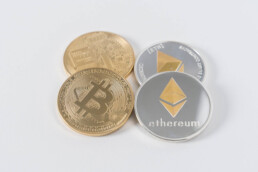Atomic Swap
The Atomic Swap is a method for exchanging or trading your cryptocurrencies very quickly with another person, without an intermediary and trustless directly from your wallet and not from any exchange.
In fact, changing two cryptocurrencies implies that there are costs for using an exchange, plus the costs of handling the coins to which the wasted time such as registering for the exchange and completing all the paperwork. This obviously does not allow us to operate within a few minutes, perhaps making us miss out on interesting opportunities on the market.
With the atomic swap we skip all these problems. Swap means exchange while the term atomic comes from the computer world and implies that an operation is conducted as planned or not conducted at all.
So looking into the details of the exchange, this must happen exactly as we have organized or it will absolutely not happen.
To give you an example of a non-atomic swap, it would be like sending the coins to a stranger hoping that he doesn't run away or that he sends me the correct coin number we agreed on.
In the atomic swap there is no human error, manipulation or fraud and it only works with crypto and not with fiat currency.
The atomic swap works through the use of smart contracts, since these allow users to avoid fraud by checking that the funds involved in the exchange are really present in the wallets of the two protagonists. These smart contracts are called Hashed Time Lock contracts.
Funds are blocked within smart contracts and can be publicly controlled on the blockchain. These funds can only be unlocked with a key called preimage that matches the hash of this contract.
At any time before the exchange, one of the parties can withdraw and the funds will return free in the wallet of the previous owner.
Atomic swaps aren't perfect as they have limitations. In fact, exchanges must only be made with coins that support specific types of smart contracts and that have the same algorithm
Some wallets already include this exchange option within them. Learn more about wallet here.
As you can see, atomic swaps can be a useful solution to bypass exchanges when we want to trade particular coins. At the moment it is not possible with all of them and therefore we will still have to go through an exchange.
Airdrop and Bounty
FREE MONEY !!!
I'm sure I have your attention now. And yes, Airdrop and Bounty are free money, well almost.
What are these two terms and what do they hide?
They are neither more or less a method of advertising in the world of crypto
Let's start with the airdrop or launch of tokens from a plane, in fact an Airdrop is nothing more than a rain token delivery on a set of addresses. Generally, airdrops are created by subscribing to some forms, where in the simplest cases you simply enter your email and ethereum address up to more complicated cases where you even ask for a KYC.
The bounties, on the other hand, are a more complicated version of airdrop. The user is asked for a more articulated and complex social action or promotion, for a greater amount of tokens.
Examples could be writing an article or creating a video, or software checks and so on
The limit is only the imagination of the advertising creators.
ICO
What is an ICO?
Ico stands for Initial Coin Offering. That is an initial offer of coins or tokens.
It has been the preferred method of funding in the world of crypto start-ups. In fact, in 2017 the never-ending race to grab the latest launch on the market made this startup financing method famous. Serious and much less serious companies have launched on the market by offering tokens and projects, for the most part totally useless and unusable, causing a bubble to develop on the market which then exploded. The frenzy of users has increased the values but the market has brought them back to much milder prices.
But how is an ICO structured if we wanted to do it today?
An ICO is generally done on the Ethereum BC via the creation of a token which is offered to the public. All this goes through a smart contract that is activated when Ethereum is sent to it. Learn more about Smart Contract here.
Each time the user sends eth to the smart contract address, it sends the number of tokens calculated based on the number of eth received from a given address. The ICO ends at the end of the tokens set by the smart contract or at the time limit of the offer.
Each user who participated will find the assigned number of tokens in his sending wallett and can thus move them at will, always based on the rules applied by the smart contract. Learn more about Smart Contract here.
As you can see, Ethereum is sent by token. Currently, ICOs have gone out of fashion and the frenzy has disappeared with them. Most of the projects failed and the values stood at large percentages below all-time highs. ICOs have been like the DOTCOM cryptocurrency bubble, a painful but useful step to cleanse the market of useless projects.
Fork
If you've heard of cryptocurrencies or are starting to get interested, then you've easily heard of FORK.
What is a Fork?
A Fork is a split into two different “directions” of the software of a cryptocurrency.
The most famous forks were the Bitcoin forks in 2017 and the Ethereum fork, which led to the creation of Ethereum Classic.
Let's start from basic by explaining the Bitcoin fork.
Bitcoin is made up of its own protocol and blockchain.
Since the protocol has rules written inside that can make its development slow in some parts, some developers may think they can improve their bitcoin by modifying the protocol.
The developers will copy the original BTC protocol and will create the necessary changes to make it work by adding only the improvement developments.
The modified protocol will create a new COIN, which will be incompatible with the BlockChain mined before.
After that it will be decided which block to start the modified protocol from. Some miners will continue to mine with the source protocol, while others will support the modified protocol. This will create two distinct blockchains that are incompatible with each other and consequently an additional coin, separated from this chosen block that will go on independently of each other.
The case we mentioned is called Hard Fork.
It should be noted that there is also a "soft Fork", which does not create a different blockchain but simply implements important software changes but still compatible with the pre-existing BC.
Users of the coin see the results of a hard fork in their wallets as a new coin is created while there are no evident results for a soft fork since this remains the prerogative of the developers. We users will be unaware.
Smart Contract
What are smart contracts? Why should we care? How can they improve our future life and why do we need to get to know them?
A smart contract is technically a digital contract designed to solve the problem of trust between two parties.
A set of lines of code indissolubly linked to the blockchain with characteristics comparable to those of a real contract.
The smart contract eliminates the third party that acts as guarantor within a transaction and thanks to the technology it allows actions to be carried out upon the occurrence of one or more conditions envisaged within the smart contract itself.
Smart contracts are distributed on the Blockchain and are immutable over time. Once deploied (i.e. written and integrated with the blockchain) it cannot be modified, nor can smart contracts be created that have a temporary duration
The fields of application and uses that can be made of smart contracts are very wide.
For example, they range from banking, postal and insurance, sharing of movable or immovable property. Any situation that requires a contract could be the protagonist of a smart contract. But be careful, being unmodifiable, they lend themselves specifically to being a source of scams or malicious backdoors.
Ethereum is currently the preferred Blockchain for creating smart contracts using the proprietary solidity language.







